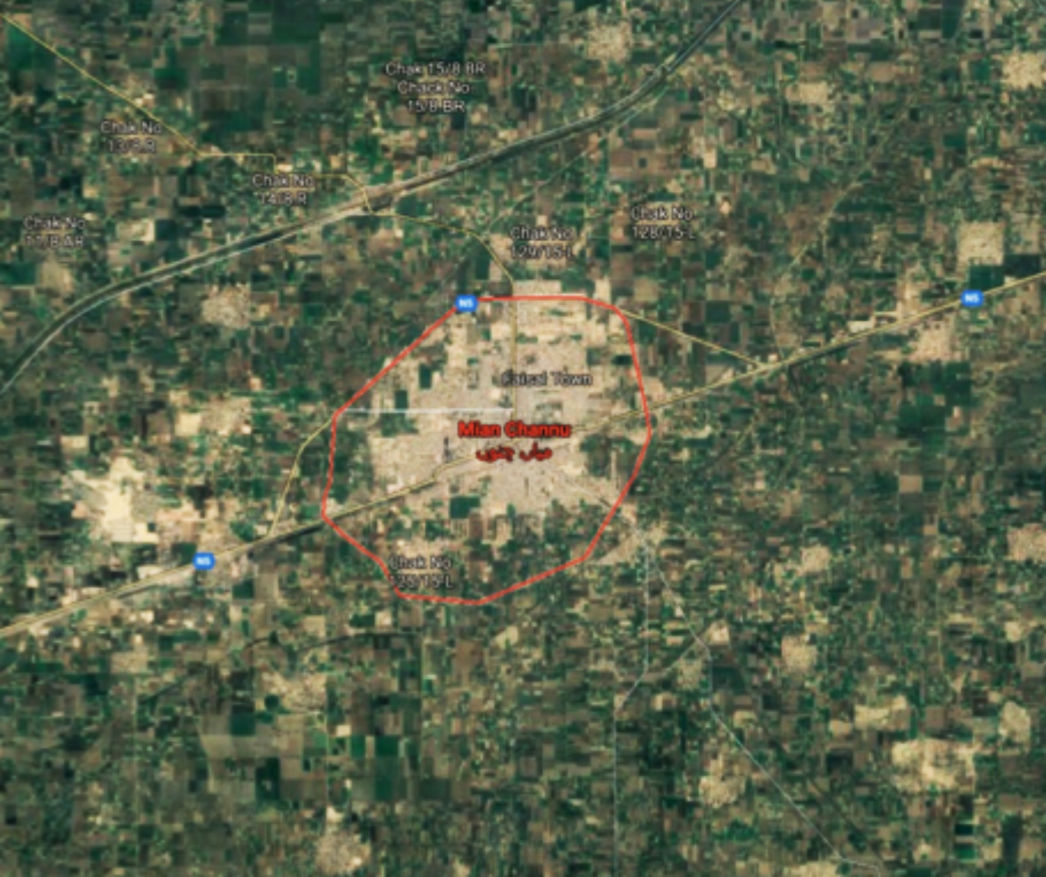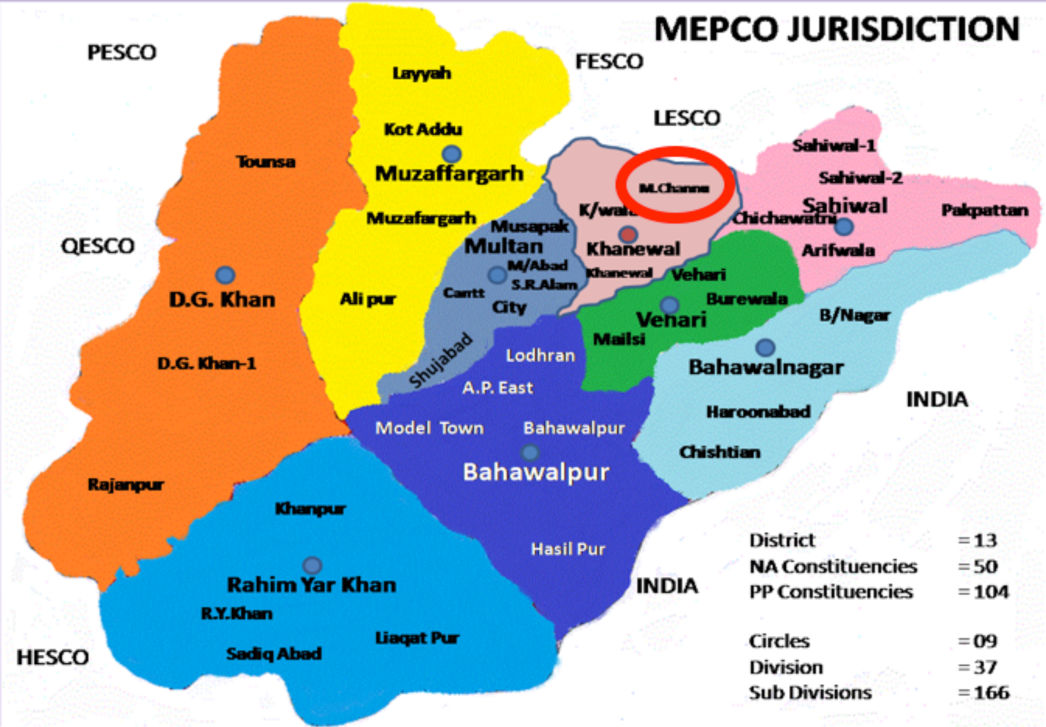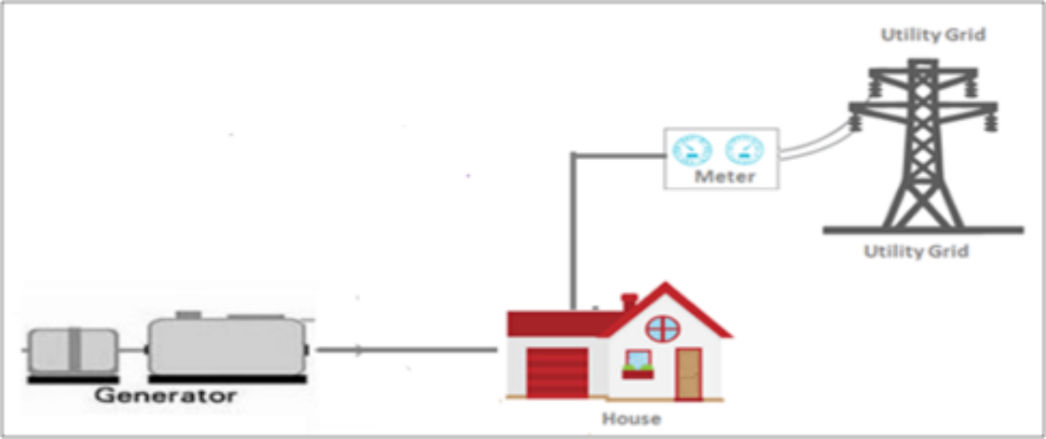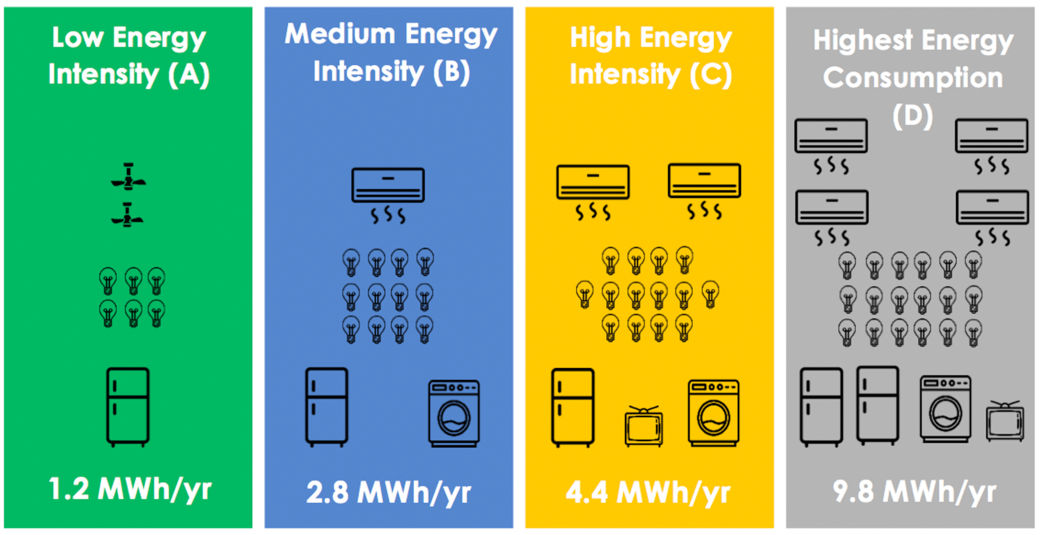
Mian Channu is a small urbanising city in the south Punjab region of Pakistan. It has a current city population of 150,000, and a population growth rate of 2.5%. The city proper is set within a district of the same name, in which there is an abundance of surrounding rural villages (Fig.1). Mian Channu is relatively well-connected to the national electricity grid, although suffers from an unreliable supply.

Electricity issues within Pakistan
Pakistan’s economy is growing, and with growth, power consumption tends to increase, placing pressure on the power infrastructure if no adequate planning is made for this predicted growth. At present, the demand for power outstrips supply and has resulted in planned power cuts (load shedding) becoming common place all over Pakistan. This is related to a network-wide supply demand gap of 5GW that causes load shedding of 10 to 12 hour per day in the country as a whole on average.
Alongside insufficient generation capacity, the supply-demand gap has been widened by a number of other issues. These are namely: a high level of technical and non-technical losses (23 to 25%), a heavy reliance (67%) on power from furnace oil-based generation, subsidised power for the domestic sector and also the electrification of rural areas; all without an increase in generation capacity (Valasai, 2017).
The electricity problem in Pakistan mainly came to surface in 2006-07 but these issues can be traced back to 1990. In 1990 the share of hydro power was 54% with the remainder coming from thermal generation. The government at that time predicted demand growth of 8% and to meet this, Independent Power Producers (IPP’s) were invited to generate power. The IPP’s mainly set up thermal power units due to quick installation times, and these power units mainly focused on furnace oil-based generation.
Over time, oil prices increased and per unit production costs also increased, soon becoming difficult for the government to pay for. Since then the electricity sector of Pakistan was plunged into financial crisis.
Ultimately the supply demand gap reached 5GW in 2015. To recap, the insufficient installed capacity, outdated plants, incapable transmission lines and poor financial management are the major issues of Pakistan’s electricity sector (Aziz, 2015).
Technical and nontechnical losses:
The supply demand gap is further widened by technical and nontechnical losses in the power sector. The technical losses are due to old equipment and transmission losses while the non-technical losses are due to theft, meter tempering and bypassing.
Subsidised power for domestic use:
The government supplies power to the domestic sector at a lower price per unit compared to the generation cost, which results in a lack of investment in electricity infrastructure.
Pakistan power sector
Electricity is mainly generated under the enterprise of the state-owned company WAPDA (Water and Power Development Authority) and IPP’s, under the generation companies (GENCOs). All these are operating under the Pakistan Electric Company (PEPCO).

Mian Channu- specific supply problems
MEPCO (Multan Electric Power Company) provides power to South Punjab and Mian Channu. MEPCO and Mian Channu are highlighted in Fig. 2.
Due to all these power issues, the average load shedding time in the city is approximately 6 hours, and residents meet supply during these load shedding periods by using small diesel generators to provide electricity.
Fig. 3 illustrates the current house system scheme used in the city. Diesel generators are the most common solution given their relatively low capital cost, operational flexibility, and controllability. However, diesel generators present variable operational cost as it depends on fuel prices and, in this area, there are constraints on the supply of diesel fuel.
Diesel generators have low efficiency when operating at light loads and they are extremely noisy. In addition, diesel generators produce carbon dioxide (CO2), nitrogen oxide (NOx), and particulate matter (P.M). These generators release these pollutants into the atmosphere, substantially reducing the air quality in nearby areas.

Current Demand Analysis
Currently, the city electricity demand is estimated at 70.4 GWh/yr. Of this, the domestic sector constitutes the highest proportion of the demand [59.5 GWh/yr; 85%], followed by the commercial sector [7 GWh/yr; 10%] and various industry and healthcare services constituting the remainder of the demand [3.5 GWh/yr; 5%].
Within the case study analysis, the domestic sector has been stratified to contain 4 broad classifications of residence ranging in energy intensity (lowest to highest) (Fig. 4). These have differing sources of major demand load, reflecting the economic status of the proposed owner-grouping, and hence free available capital. This assumes a directly proportional relationship between owner economic prosperity, and energy consumption.
The lowest energy intensive house (A) has an average annual consumption of 1.2 MWh/yr, and loads such as lighting, fan-cooling and refrigeration appliances compose the major demand.
The medium energy intensity house (B) has an average annual consumption of 2.8 MWh/yr, with a more diverse load profile than the previous, and crucially with the introduction of air-conditioning units [x 1] as the primary cooling and largest load source.
The high energy intensity house (C) has an average annual consumption of 4.4 MWh/yr, notably having [x 2] air conditioning units and multiple appliances.
The highest energy intensive house (D) has an average annual consumption of 9.8 MWh/yr, more than double the previous rating, and is estimated to comprise multiple air-conditioning units, and a large diversity of appliances.
